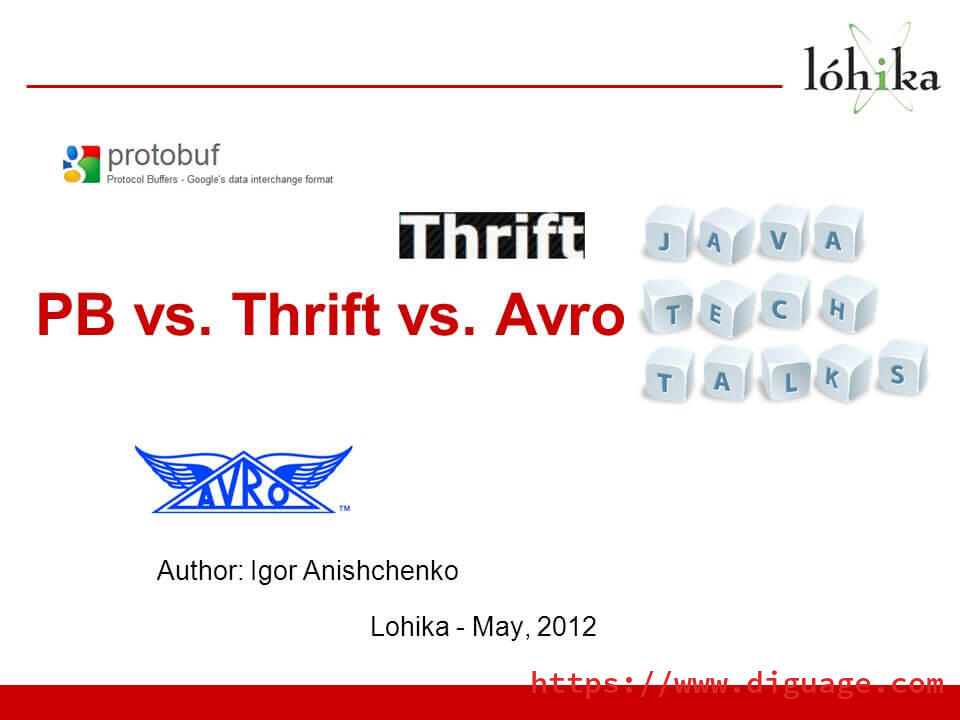
公司最近一年在推进降本增效,在用尽各种手段之后,发现应用太多,每个应用都做跨机房容灾部署,则最少需要 4 台机器(称为容器更合适)。那么,将相近应用做一个合并,减少维护项目,提高机器利用率就是一个可选方案。
经过前后三次不同的折腾,最后探索出来一个可行方案。记录一下,分享出来,希望对有相关需求的研发童鞋有所帮助。下面按照四种可能的方案,分别做介绍。另外,为了方便做演示,专门整了两个演示项目:
diguage/merge-demo-boot — 合并项目,下面简称为 boot。
diguage/merge-demo-web — 被合并项目,下面简称为 web。
Jar 包引用 这个方式,可能是给人印象最容易的方式。仔细思考一下,从维护性的角度来看,这个方式反而是最麻烦的方式,理由如下:
web 项目每次更新,都需要重新打包发布新版; boot 项目也需要跟着更新发布。拉一次屎,脱两次裤子。属实麻烦。
还需要考虑 web 项目的加载问题,类似下面要描述的,是否共用容器:
共用容器 — 这是最容器想到的方式。但是这种方式,需要解决 Bean 冲突的问题。
不共用容器 — 这种方式需要处理 web 容器如何加载的问题。默认应该是无法识别。
基于这些考虑,这种方式直接被抛弃了。
仓库合并,公用一套容器 这是第一次尝试使用的方案。也是遇到问题最多的方案。
将两个仓库做合并。
将 web 仓库的地址配置到 boot 项目里: git remote add web git@github.com:diguage/merge-demo-web.git;
在 boot 项目里,切出来一个分支: git switch -c web;
将 web 分支的提交清空: git update-ref -d HEAD,然后做一次提交;
将 web 项目的代码克隆到 web 分支上: git pull --rebase --allow-unrelated-histories web master;注意,这里需要加 --allow-unrelated-histories 参数,以允许不相干的仓库进行合并。

最近有小伙伴在开发时,遇到了一个 Spring 占位符,例如 ${token}, 在不同环境下处理不一致的问题,正好对 Spring 对占位符的处理也有一些不清楚的地方,趁此机会,把 Spring 对占位符的处理机制深入了解一下,方便后续排查问题。
经常阅读D瓜哥博客的朋友可能知道,D瓜哥在 Spring 扩展点实践:整合 Apache Dubbo(一): Spring 插件机制简介 中已经介绍了 Spring 的插件机制。在阅读以下内容之前,建议大家先去阅读一下这篇文章中“Spring 插件机制简介”章节的内容,以便于无缝衔接。
在分析的过程中发现, Spring 对占位符有两种截然不同的出来阶段:① XML 配置文件中的占位符;② Java 源代码中 @Value 注解中的占位符。由于内容较多,一篇讲解完有些过长,所以分三篇文章来分别介绍这两种处理过程。
本篇首先来介绍一下对 XML 配置文件中的占位符的处理。
示例代码 在正式开始之前,先来看一下示例代码:
UserRpc.java /** * @author D瓜哥 · https://www.diguage.com * @since 2023-05-02 10:23:49 */ public class UserRpc { @Value("${user.appId}") private String appId; // 这里不使用注解,而是使用 XML 配置 // @Value("${user.token}") private String token; } token.properties user.appId=dummyAppId user.token=dummyToken spring.xml <?xml version="1.

前面系统研究了 Hessian 序列化协议。并以此为契机,顺带实例对比了 Hessian、MessagePack 和 JSON 的序列化。早在 2012 年,Martin Kleppmann 就写了一篇文章 《Schema evolution in Avro, Protocol Buffers and Thrift》,也是基于实例,对比了 Avro、ProtoBuf、Thrift 的差别。现在翻译出来,方便做系列研究。
整个“序列化系列”目录如下:
Hessian 2.0 序列化协议(中文版) — Hessian 序列化协议的中文翻译版。根据后面的“协议解释与实战”系列文章,增加了协议内容错误提示。
Hessian 协议解释与实战(一):布尔、日期、浮点数与整数 — 介绍布尔型数据、日期类型、浮点类型数据和整数类型数据等四种类型的数据的处理。
Hessian 协议解释与实战(二):长整型、二进制数据与 Null — 介绍长整数类型数据、二进制数据和 null 等三种类型的数据的处理。
Hessian 协议解释与实战(三):字符串 — 专门介绍了关于字符串的处理。由于字符串需要铺垫的基础知识比较多,处理细节也有繁琐,所以单独成篇来介绍。
Hessian 源码分析(Java) — 开始第四篇分析之前,先来介绍一下 Hessian 的源码实现。方便后续展开说明。
Hessian 协议解释与实战(四):数组与集合 — 铺垫了一些关于实例对象的处理,重点介绍关于数组和集合的相关处理。
Hessian 协议解释与实战(五):对象与映射 — 重点介绍关于对象与映射的相关处理。
Hessian、Msgpack 和 JSON 实例对比 — 用实例对比 JSON、Hessian 和 MessagePack 的区别。
Avro、ProtoBuf、Thrift 的模式演进之路 — 翻译的 Martin Kleppmann 的文章,重点对比了 Avro、ProtoBuf、Thrift 的序列化处理思路。

前段时间,翻译了 Hessian 2.0 的序列化协议,发布在了 Hessian 2.0 序列化协议(中文版)。但是,其中有很多言语不详之处。所以,接下来会用几篇文章来详细解释并实践一下 Hessian 序列化协议,以求做到知其然知其所以然。
目录如下:
Hessian 2.0 序列化协议(中文版) — Hessian 序列化协议的中文翻译版。根据后面的“协议解释与实战”系列文章,增加了协议内容错误提示。
Hessian 协议解释与实战(一):布尔、日期、浮点数与整数 — 介绍布尔型数据、日期类型、浮点类型数据和整数类型数据等四种类型的数据的处理。
Hessian 协议解释与实战(二):长整型、二进制数据与 Null — 介绍长整数类型数据、二进制数据和 null 等三种类型的数据的处理。
Hessian 协议解释与实战(三):字符串 — 专门介绍了关于字符串的处理。由于字符串需要铺垫的基础知识比较多,处理细节也有繁琐,所以单独成篇来介绍。
Hessian 源码分析(Java) — 开始第四篇分析之前,先来介绍一下 Hessian 的源码实现。方便后续展开说明。
Hessian 协议解释与实战(四):数组与集合 — 铺垫了一些关于实例对象的处理,重点介绍关于数组和集合的相关处理。
Hessian 协议解释与实战(五):对象与映射 — 重点介绍关于对象与映射的相关处理。
Hessian、Msgpack 和 JSON 实例对比 — 用实例对比 JSON、Hessian 和 MessagePack 的区别。
未完待续,敬请继续关注 "地瓜哥"博客网。
本文用实际来对比一下 JSON、Hessian 和 MessagePack 的区别。
模型 package com.diguage; import java.math.BigDecimal; import java.util.Date; /** * 用户 * * @author D瓜哥 · https://www.

前段时间,翻译了 Hessian 2.0 的序列化协议,发布在了 Hessian 2.0 序列化协议(中文版)。但是,其中有很多言语不详之处。所以,接下来会用几篇文章来详细解释并实践一下 Hessian 序列化协议,以求做到知其然知其所以然。目录如下:
Hessian 2.0 序列化协议(中文版) — Hessian 序列化协议的中文翻译版。根据后面的“协议解释与实战”系列文章,增加了协议内容错误提示。
Hessian 协议解释与实战(一):布尔、日期、浮点数与整数 — 介绍布尔型数据、日期类型、浮点类型数据和整数类型数据等四种类型的数据的处理。
Hessian 协议解释与实战(二):长整型、二进制数据与 Null — 介绍长整数类型数据、二进制数据和 null 等三种类型的数据的处理。
Hessian 协议解释与实战(三):字符串 — 专门介绍了关于字符串的处理。由于字符串需要铺垫的基础知识比较多,处理细节也有繁琐,所以单独成篇来介绍。
Hessian 源码分析(Java) — 开始第四篇分析之前,先来介绍一下 Hessian 的源码实现。方便后续展开说明。
Hessian 协议解释与实战(四):数组与集合 — 铺垫了一些关于实例对象的处理,重点介绍关于数组和集合的相关处理。
Hessian 协议解释与实战(五):对象与映射 — 重点介绍关于对象与映射的相关处理。
Hessian、Msgpack 和 JSON 实例对比 — 用实例对比 JSON、Hessian 和 MessagePack 的区别。
Avro、ProtoBuf、Thrift 的模式演进之路 — 翻译的 Martin Kleppmann 的文章,重点对比了 Avro、ProtoBuf、Thrift 的序列化处理思路。
在上一篇文章 Hessian 协议解释与实战(四):数组与集合 中研究了数组和集合的处理方式。接下来介绍对象和映射的处理。
基础工具方法 基础工具方法就不再赘述,请直接参考 Hessian 协议解释与实战(一):基础工具方法 中提到的几个方法。

前段时间,翻译了 Hessian 2.0 的序列化协议,发布在了 Hessian 2.0 序列化协议(中文版)。但是,其中有很多言语不详之处。所以,接下来会用几篇文章来详细解释并实践一下 Hessian 序列化协议,以求做到知其然知其所以然。目录如下:
Hessian 2.0 序列化协议(中文版) — Hessian 序列化协议的中文翻译版。根据后面的“协议解释与实战”系列文章,增加了协议内容错误提示。
Hessian 协议解释与实战(一):布尔、日期、浮点数与整数 — 介绍布尔型数据、日期类型、浮点类型数据和整数类型数据等四种类型的数据的处理。
Hessian 协议解释与实战(二):长整型、二进制数据与 Null — 介绍长整数类型数据、二进制数据和 null 等三种类型的数据的处理。
Hessian 协议解释与实战(三):字符串 — 专门介绍了关于字符串的处理。由于字符串需要铺垫的基础知识比较多,处理细节也有繁琐,所以单独成篇来介绍。
Hessian 源码分析(Java) — 开始第四篇分析之前,先来介绍一下 Hessian 的源码实现。方便后续展开说明。
Hessian 协议解释与实战(四):数组与集合 — 铺垫了一些关于实例对象的处理,重点介绍关于数组和集合的相关处理。
Hessian 协议解释与实战(五):对象与映射 — 重点介绍关于对象与映射的相关处理。
Avro、ProtoBuf、Thrift 的模式演进之路 — 翻译的 Martin Kleppmann 的文章,重点对比了 Avro、ProtoBuf、Thrift 的序列化处理思路。
在上一篇文章 Hessian 源码分析(Java) 对 Hessian 的 Java 实现做了一个概要的分析,对处理流程以及整体架构做了一个简单的分析。接下来,回到主题,继续来解释 Hessian 序列化协议。这篇文章,我们来重点分析一下数组与集合相关的操作。
基础工具方法 基础工具方法就不再赘述,请直接参考 Hessian 协议解释与实战(一):基础工具方法 中提到的几个方法。
对打印字符的工具做一下改造:

前面通过几篇文章,解释并实践了一下 Hessian 的序列化协议。文章目录如下:
Hessian 2.0 序列化协议(中文版) — Hessian 序列化协议的中文翻译版。根据后面的“协议解释与实战”系列文章,增加了协议内容错误提示。
Hessian 协议解释与实战(一):布尔、日期、浮点数与整数 — 介绍布尔型数据、日期类型、浮点类型数据和整数类型数据等四种类型的数据的处理。
Hessian 协议解释与实战(二):长整型、二进制数据与 Null — 介绍长整数类型数据、二进制数据和 null 等三种类型的数据的处理。
Hessian 协议解释与实战(三):字符串 — 专门介绍了关于字符串的处理。由于字符串需要铺垫的基础知识比较多,处理细节也有繁琐,所以单独成篇来介绍。
Hessian 源码分析(Java) — 开始第四篇分析之前,先来介绍一下 Hessian 的源码实现。方便后续展开说明。
Hessian 协议解释与实战(四):数组与集合 — 铺垫了一些关于实例对象的处理,重点介绍关于数组和集合的相关处理。
Hessian 协议解释与实战(五):对象与映射 — 重点介绍关于对象与映射的相关处理。
Hessian、Msgpack 和 JSON 实例对比 — 用实例对比 JSON、Hessian 和 MessagePack 的区别。
Avro、ProtoBuf、Thrift 的模式演进之路 — 翻译的 Martin Kleppmann 的文章,重点对比了 Avro、ProtoBuf、Thrift 的序列化处理思路。
该系列第四篇文章准备详细介绍一下 Hessian 对对象、链表以及 Map 等处理。但是,越调试代码,越发觉得应该先对 Hessian 的实现做一个源码分析。于是,就有了本文。
这里有几点需要声明一下:
在上面“解释与实战”系列文章中提到的代码就不再重复说明。
通过“解释与实战”系列文章,大家应该可以领略到,处理序列化有大量的细节。但是,本文并不打算涉及。本文重点是介绍 Hessian 的 Java 实现的架构蓝图。相当于给指明一条路,沿着这条路,大家就可以探索 Hessian 的各种细节。

前段时间,翻译了 Hessian 2.0 的序列化协议,发布在了 Hessian 2.0 序列化协议(中文版)。但是,其中有很多言语不详之处。所以,接下来会用几篇文章来详细解释并实践一下 Hessian 序列化协议,以求做到知其然知其所以然。目录如下:
Hessian 2.0 序列化协议(中文版) — Hessian 序列化协议的中文翻译版。根据后面的“协议解释与实战”系列文章,增加了协议内容错误提示。
Hessian 协议解释与实战(一):布尔、日期、浮点数与整数 — 介绍布尔型数据、日期类型、浮点类型数据和整数类型数据等四种类型的数据的处理。
Hessian 协议解释与实战(二):长整型、二进制数据与 Null — 介绍长整数类型数据、二进制数据和 null 等三种类型的数据的处理。
Hessian 协议解释与实战(三):字符串 — 专门介绍了关于字符串的处理。由于字符串需要铺垫的基础知识比较多,处理细节也有繁琐,所以单独成篇来介绍。
Hessian 源码分析(Java) — 开始第四篇分析之前,先来介绍一下 Hessian 的源码实现。方便后续展开说明。
Hessian 协议解释与实战(四):数组与集合 — 铺垫了一些关于实例对象的处理,重点介绍关于数组和集合的相关处理。
Hessian 协议解释与实战(五):对象与映射 — 重点介绍关于对象与映射的相关处理。
Hessian、Msgpack 和 JSON 实例对比 — 用实例对比 JSON、Hessian 和 MessagePack 的区别。
Avro、ProtoBuf、Thrift 的模式演进之路 — 翻译的 Martin Kleppmann 的文章,重点对比了 Avro、ProtoBuf、Thrift 的序列化处理思路。
在上一篇文章 Hessian 协议解释与实战(二):长整型、二进制数据与 Null 中研究了长整型、二进制数据与 null 等三种数据类型的处理方式。接下来,我们再来介绍字符串的处理情况。

前段时间,翻译了 Hessian 2.0 的序列化协议,发布在了 Hessian 2.0 序列化协议(中文版)。但是,其中有很多言语不详之处。所以,接下来会用几篇文章来详细解释并实践一下 Hessian 序列化协议,以求做到知其然知其所以然。目录如下:
Hessian 2.0 序列化协议(中文版) — Hessian 序列化协议的中文翻译版。根据后面的“协议解释与实战”系列文章,增加了协议内容错误提示。
Hessian 协议解释与实战(一):布尔、日期、浮点数与整数 — 介绍布尔型数据、日期类型、浮点类型数据和整数类型数据等四种类型的数据的处理。
Hessian 协议解释与实战(二):长整型、二进制数据与 Null — 介绍长整数类型数据、二进制数据和 null 等三种类型的数据的处理。
Hessian 协议解释与实战(三):字符串 — 专门介绍了关于字符串的处理。由于字符串需要铺垫的基础知识比较多,处理细节也有繁琐,所以单独成篇来介绍。
Hessian 源码分析(Java) — 开始第四篇分析之前,先来介绍一下 Hessian 的源码实现。方便后续展开说明。
Hessian 协议解释与实战(四):数组与集合 — 铺垫了一些关于实例对象的处理,重点介绍关于数组和集合的相关处理。
Hessian 协议解释与实战(五):对象与映射 — 重点介绍关于对象与映射的相关处理。
Hessian、Msgpack 和 JSON 实例对比 — 用实例对比 JSON、Hessian 和 MessagePack 的区别。
Avro、ProtoBuf、Thrift 的模式演进之路 — 翻译的 Martin Kleppmann 的文章,重点对比了 Avro、ProtoBuf、Thrift 的序列化处理思路。
在上一篇文章 Hessian 协议解释与实战(一) 中研究了布尔型数据、日期类型、浮点类型数据、整数类型数据等四种数据类型的处理方式。接下来,我们再来介绍长整数类型数据、二进制数据和 null 的处理情况。

前段时间,翻译了 Hessian 2.0 的序列化协议,发布在了 Hessian 2.0 序列化协议(中文版)。但是,其中有很多言语不详之处。所以,接下来会用几篇文章来详细解释并实践一下 Hessian 序列化协议,以求做到知其然知其所以然。
目录如下:
Hessian 2.0 序列化协议(中文版) — Hessian 序列化协议的中文翻译版。根据后面的“协议解释与实战”系列文章,增加了协议内容错误提示。
Hessian 协议解释与实战(一):布尔、日期、浮点数与整数 — 介绍布尔型数据、日期类型、浮点类型数据和整数类型数据等四种类型的数据的处理。
Hessian 协议解释与实战(二):长整型、二进制数据与 Null — 介绍长整数类型数据、二进制数据和 null 等三种类型的数据的处理。
Hessian 协议解释与实战(三):字符串 — 专门介绍了关于字符串的处理。由于字符串需要铺垫的基础知识比较多,处理细节也有繁琐,所以单独成篇来介绍。
Hessian 源码分析(Java) — 开始第四篇分析之前,先来介绍一下 Hessian 的源码实现。方便后续展开说明。
Hessian 协议解释与实战(四):数组与集合 — 铺垫了一些关于实例对象的处理,重点介绍关于数组和集合的相关处理。
Hessian 协议解释与实战(五):对象与映射 — 重点介绍关于对象与映射的相关处理。
Hessian、Msgpack 和 JSON 实例对比 — 用实例对比 JSON、Hessian 和 MessagePack 的区别。
Avro、ProtoBuf、Thrift 的模式演进之路 — 翻译的 Martin Kleppmann 的文章,重点对比了 Avro、ProtoBuf、Thrift 的序列化处理思路。
基础工具方法 Hessian 序列化之后的数据,都是字节数组,为了方便查看字节数组的二进制形式和十六进制形式,在正式开始之前,先介绍一下期间用到的辅助工具方法。闲言少叙,直接上代码:
/** * 创建 Hessian2Output 对象,以便用于序列化 * * @author D瓜哥 · https://www.





